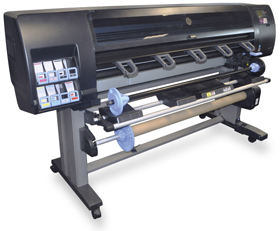Solvent and Latex printing technologies have come a long way from printing black on white to producing life-like printouts with a gamut of colors and attributes. Inks or fluids are the base of printing technology and they have gone through many changes to adapt to the new machines and devices. In case of performance or the quality of printed images, Latex and solvent inkjet fluids generally produce similar results. Current research on Latex printing highlights its health and environmental advantages, while solvent technology gets points for producing high-density, easy dry, and scratch-resistant coated end result. So, it’s a win-win for you, if you select either of these printing solutions, right? Wrong! With evolving technology, we need to look towards the methods that can deliver satisfactory results while playing well with the environment. So let us chase down the facts and try to find out which printing technology is likely to be the best option for us in the future.

Lamination Is Not A Must-do Anymore
Although latex printing is considerably younger than solvent, the new technology is showing off quite a few tricks to simplify our operations and satisfy our requirements. Over the years, laminating the printouts was necessary to save its color quality. But, with latex solutions, we can just skip that part. Printouts produced by the new technology can last for approximately three years in the outdoors without lamination.
Get Rid of Print Odor
Latex printing wins another point by producing odorless printouts, which solvent technology cannot. Solvent printing options add a distinctive and unwanted odor to their printouts, which can be quite problematic for specific applications, such as indoor banner displays. Latex solutions can produce odorless printouts, which can be the best option for advertisement in enclosed spaces and hygienic environments.
The New Quick-dry Option Is Convenient
Solvent ink printing requires 12-24 hours (approx) to dry out the colors. Outgassing process is very common at this point. Skipping the drying process and moving on to lamination is not a viable option in solvent printing, because shorter drying time can put bubbles on the print face and damage its color quality. Latex printing inks, on the other hand, have 60% water. It uses heat to dry out the prints as quickly as they get out of the machine. This quick-dry facility can save time and simplify the printing operation. Get Glossy Printout Finish
HP’s business manager for large-format in the UK, Jane Rixon, explains that latex printing options can add a more glossy finish to the printouts. This naturally adds a more natural feel to your products. Although solvent printers offer a wider choice of substrates, it latest counterpart is fast catching up. Rixon also mentions that latex printers come with low maintenance options and have automated cleaning features, which can cut down repair expenses considerably. Unfortunately, solvent printing does not offer these facilities.
A Better Recycling Option
Recent research and tests on Latex printing shows that its color fragments stay on top of the printing media, which provides a better way of recycling the items. On the other hand, solvent printing uses inks that are generally absorbed by the media and it makes recycling a lengthy process. Latex printing also works without emitting harmful Volatile organic compounds or VOCs, thus saving the environment. So, the users do no need to bother about setting up a ventilation system anymore.
Besides offering new and better printing solutions to the users, latex printing technology works very well with the new thermal print head options. Compatibility, efficiency, and low maintenance feature of latex inkjet fluids printing technology has already fast-forwarded its ascent to being the best printing solution. There is little wonder that it is enjoying a wide acceptance among users.




